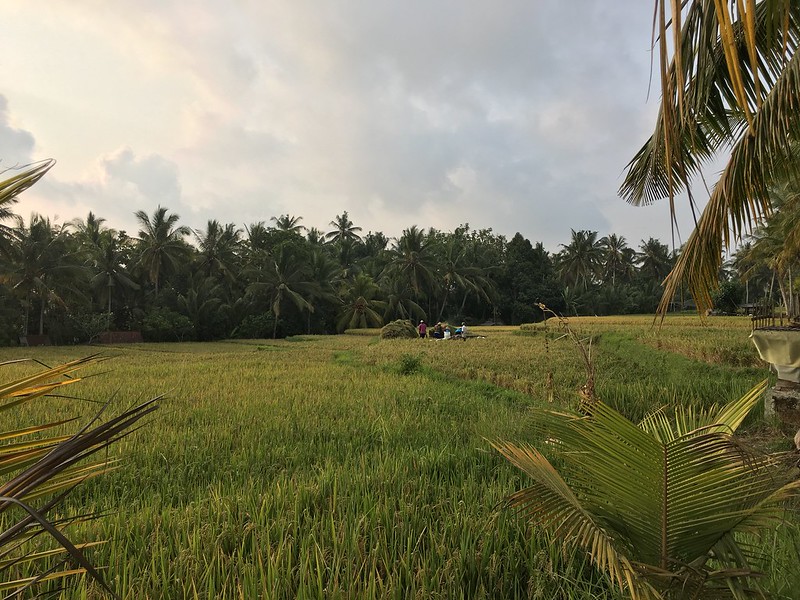On the long series of flights home, I get a chance to review photos from both my DSLR and iPhone while triaging my Instapaper queue. I have more than a few articles saved that proclaim that the camera in an iPhone today is good enough to be considered a camera, not just a smartphone camera. These articles began to percolate around the time of the iPhone 4S, and they are a perennial curiousity for me, especially as I glance at my screen of crisp photos taken on my DSLR.
There’s no question that an iPhone has never had a better camera than those in the 6S and 6S Plus today, with the latter edging out the former due to its optical stabilization. iPhones — and smartphones in general — have taken very good quality photos for the past few years, and I would not hesitate to print or frame any of them. In fact, every photo in this travelogue is unedited, and I think they all look pretty good.
But I’m looking now at photos from that paddy field back in Ubud, and there is an inescapable muddiness to the trees in the background. I didn’t bring my DSLR on that walk to compare, but I’ve no doubt it would render a vastly clearer and more detailed image.
Nick Heer
Interesting travel observations here, both regarding camera quality and the increasing importance of smartphones in developing nations. I can’t help agreeing with his conclusion – and there are some comparison photos later in the article to back it up. Ever since I upgraded to an iPhone 6 I’ve been constantly disappointed by the quality of the photos, despite good reviews and technical improvements. There is simply too much noise in photos, especially in low light, even when using the flash – they look muddy, like a poorly up-scaled low-quality image. Part of the cause are technical limitations like the size of the sensor and lens quality, but I feel the bigger issue is the software processing done by the camera app. But until users get access to original Raw files – something that, knowing Apple, has practically zero chance to happen – we’ll never know for sure.
If Apple doesn’t fix the automatic noise s/w in a year or so, I won’t get another iPhone. It’s that simple.
— Phil Plait (@BadAstronomer) December 15, 2015

Post a Comment